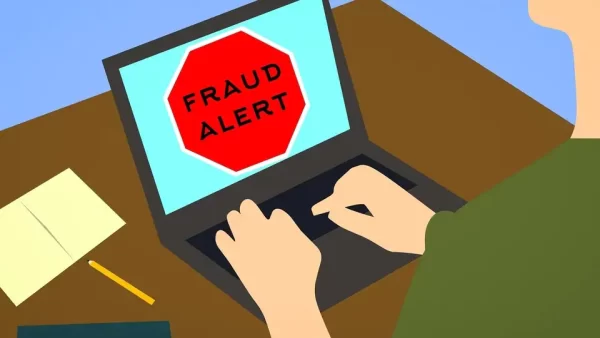In the digital age, scams and fraudulent activities have taken on new and innovative forms. One such form that has gained notoriety in recent times is the US9514961195221 scam fake text messages. These deceptive text messages have left many individuals puzzled and concerned about their safety and financial security. In this comprehensive article, we will delve into the world of US9514961195221 scam fake text messages, exploring their origins, modus operandi, potential risks, and how to protect yourself from falling victim to such scams.
Understanding US9514961195221 Scam Fake Text Messages
What Are US9514961195221 Scam Fake Text Messages?
US9514961195221 scam fake text messages are a type of phishing scam that involves fraudulent text messages sent to unsuspecting individuals. These messages typically claim to be from a legitimate source, such as a well-known company, government agency, or financial institution, and often contain urgent or alarming content to prompt the recipient to take immediate action.
Common Characteristics of US9514961195221 Scam Text Messages
- Urgent Tone: Scammers use urgent language to create a sense of panic, urging recipients to respond quickly.
- False Claims: The messages may contain false information, such as threats of legal action or account suspension.
- Suspicious Links: Scammers often include links that lead to phishing websites designed to steal personal information.
- Request for Personal Information: Victims may be asked to provide sensitive information like Social Security numbers, bank account details, or credit card numbers.
Origins of US9514961195221 Scam Fake Text Messages
The exact origin of US9514961195221 scam fake text messages is often challenging to trace due to the anonymity provided by the internet. These scams can be orchestrated by individuals or groups from various locations around the world. Typically, scammers use technology to hide their identities, making it difficult for law enforcement agencies to apprehend them.
How the Scam Operates
Initial Contact
Victims of the US9514961195221 scam usually receive an unsolicited text message on their mobile devices. The message is designed to appear as if it’s from a reputable organization or government agency.
Urgent Threats
The content of the text message often contains urgent threats or warnings. For example, it might claim that the recipient’s bank account has been compromised, their taxes are overdue, or they have a pending legal issue.
Request for Personal Information
To resolve the supposed issue, the scammer will request sensitive personal information from the victim. This could include Social Security numbers, bank account details, or credit card information.
Phishing Links
In many cases, the text message includes a link that directs the recipient to a fraudulent website that closely resembles the official site of the organization mentioned in the message. The victim is then prompted to enter their personal information, which is captured by the scammers.
Financial Loss
Once scammers obtain the victim’s personal information, they can use it for various fraudulent activities, including identity theft, unauthorized financial transactions, or even selling the information on the dark web.
Risks and Consequences
Financial Loss
One of the most immediate risks associated with falling victim to US9514961195221 scam fake text messages is financial loss. Scammers can drain bank accounts, make unauthorized purchases, or open lines of credit in the victim’s name, leading to significant financial hardship.
Identity Theft
The personal information collected by scammers can be used for identity theft, which can have long-lasting and devastating consequences for victims. It may take years to fully recover from the effects of identity theft.
Psychological Impact
Being targeted by a scam can have a significant psychological impact on victims. Feelings of fear, anxiety, and betrayal are common among those who have fallen victim to such scams.
Legal Troubles
In some cases, victims of these scams may find themselves entangled in legal troubles if scammers use their stolen information for illegal activities. Proving one’s innocence can be a lengthy and challenging process.
How to Protect Yourself
Be Skeptical
Always be skeptical of unsolicited text messages, especially those that contain urgent demands or threats. Verify the legitimacy of the message by contacting the supposed organization directly using official contact information.
Don’t Click on Suspicious Links
Avoid clicking on any links provided in text messages from unknown sources. Instead, manually enter the official website URL of the organization in question into your web browser.
Protect Your Personal Information
Never share sensitive personal information, such as Social Security numbers or financial details, in response to a text message. Legitimate organizations will never ask for such information through text messages.
Use Security Software
Install reputable security software on your mobile device to help identify and block scam messages. Keep your software and operating system up to date to ensure the latest security patches are applied.
FAQs
Q1: What should I do if I receive a suspicious text message from US9514961195221?
A1: Delete the message immediately and do not respond. If you are concerned about its legitimacy, contact the organization directly using official contact information.
Q2: Can scammers be traced and prosecuted for sending these scam messages?
A2: While it can be challenging, law enforcement agencies continue to work on tracing and prosecuting scammers involved in such activities. Reporting the scam to the appropriate authorities can help in this regard.
Q3: What should I do if I have already fallen victim to a US9514961195221 scam?
A3: Contact your bank or financial institution immediately to report the incident and take steps to secure your accounts. Additionally, report the scam to your local law enforcement agency and consider placing a fraud alert on your credit reports.
Q4: Are there any government agencies or organizations that provide resources to help victims of scams?
A4: Yes, many government agencies, such as the Federal Trade Commission (FTC) in the United States, offer resources and guidance for scam victims. They can provide information on reporting scams and recovering from their effects.
Q5: How can I stay informed about the latest scams and frauds?
A5: Stay informed by regularly checking official websites of government agencies, such as the FTC or the Better Business Bureau, for updates on the latest scams. You can also subscribe to scam alert newsletters and follow reputable news sources.
Conclusion
US9514961195221 scam fake text messages are a modern menace that preys on individuals’ trust and fear. By understanding the tactics employed by scammers, recognizing the red flags, and taking proactive steps to protect yourself, you can reduce the risk of falling victim to these scams. Stay vigilant, stay informed, and remember that caution is your best defense against these deceptive messages.



